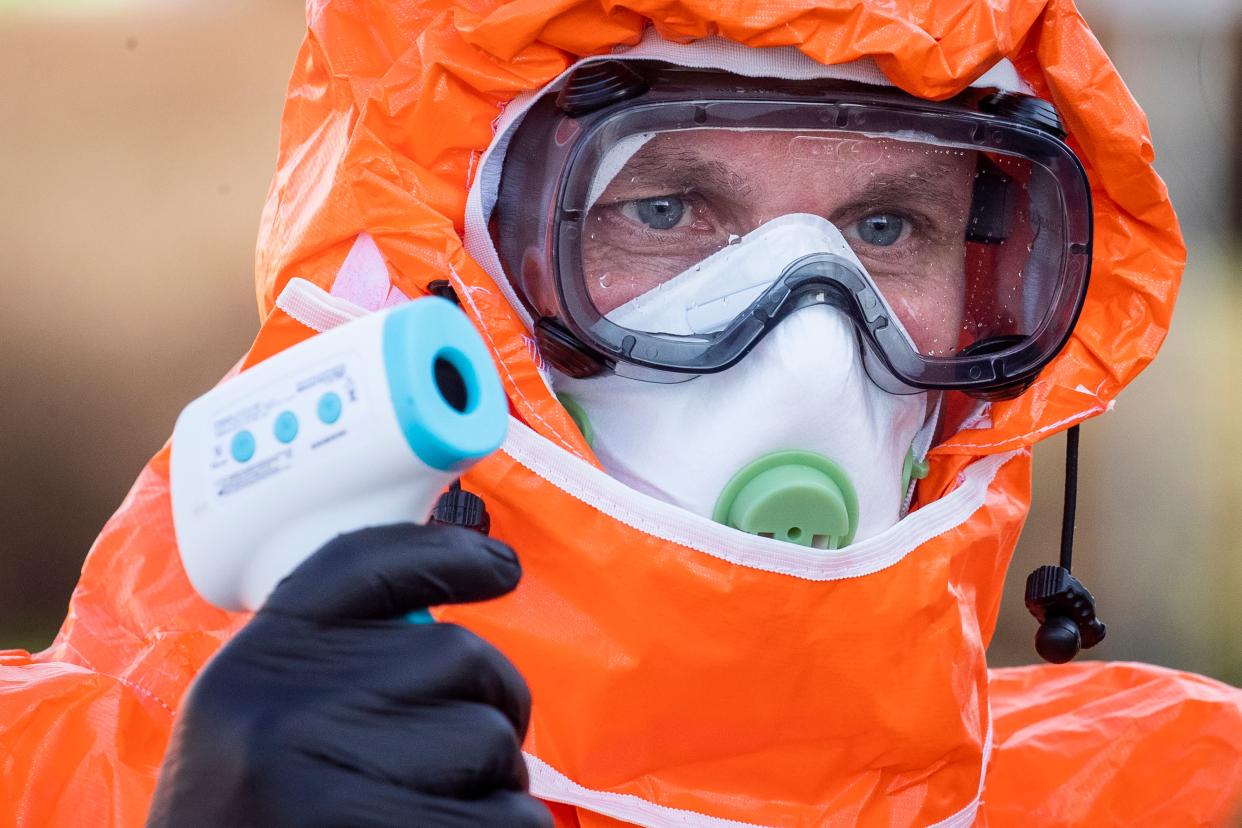Can the coronavirus survive on surfaces?

The coronavirus may survive on surfaces for several days, research suggests.
The circulating strain is making headlines all over the world, but was virtually unheard of at the start of the year.
Although known to spread via coughs and sneezes, little was understood about whether the virus “lurks” in the air or on surfaces.
To learn more, scientists from the National Institutes of Health in the US used a nebuliser device to expel the virus into the air, mimicking a cough or sneeze.
Results suggest the “viable virus” could be detected up to three hours later in the air, and up to three days later on plastic and stainless steel.
The findings are yet to be peer reviewed, however, experts have called them “sobering” and “scientifically sound”.
Can the coronavirus survive on surfaces?
The coronavirus is a strain of a class of viruses, of which seven are known to infect humans.
Others cause everything from the common cold to severe acute respiratory syndrome (Sars), which killed 774 people during its 2002/3 outbreak.
Latest coronavirus news, updates and advice
Live: Follow all the latest updates from the UK and around the world
Fact-checker: The number of COVID-19 cases in your local area
Explained: Symptoms, latest advice and how it compares to the flu
The new coronavirus is thought to be more genetically similar to Sars than any other strain of that class.
Despite their similarities, the new coronavirus is proving to be much more serious.
When it comes to whether it can survive on hard surfaces, the US Centers for Disease Control and Prevention claims it “may be possible a person can get [the virus] by touching a surface or object that has the virus on it and then touching their own mouth, nose, or possibly their eyes”.
It adds, however, “this is not thought to be the main way the virus spreads”.
In the National Institutes of Health’s research, the team found the new coronavirus and Sars survive for similar lengths of time in the air and on surfaces.
Results suggest the new strain was “viable” up to three hours later in the air, up to four hours on copper, up to 24 hours on cardboard, and up to three days on plastic and stainless steel.
The scientists concluded the “greater environmental viability” of the new coronavirus does not therefore account for its greater severity over Sars.
They were also quick to point out their results do not suggest patients are catching the virus from the air or contaminated surfaces, with coughs and sneezes the main routes of transmission.
“We're not by any way saying there is aerosolised transmission of the virus, but this work shows the virus stays viable for long periods in those conditions, so it's theoretically possible,” said lead author Dr Neeltje van Doremalen.

The results have been published “preliminarily” at Medrix online, rather than in a peer-reviewed journal.
When peer-reviewed, a panel of scientists not involved in the research weigh in on its strengths and weaknesses.
Nevertheless, several experts said the results appeared valid.
“This is really valuable and sobering evidence,” said Professor Jimmy Whitworth from the London School of Hygiene & Tropical Medicine.
“It gives us numbers and confirms what many of us have been suspecting, which is there may well be an aerosol element to transmission; it is from someone’s cough or sneeze and stays there for a while.
“The advice to wipe down surfaces is important.”
Professor Willem van Schaik from the University of Birmingham agreed, adding: “The preprint on survival of the coronavirus on surfaces is scientifically valid in my opinion.
“Coronaviruses appear to remain viable on surfaces for longer periods of time than the flu viruses, which may contribute to its rapid spread.
“The implications of this are very clear: people should wash their hands very frequently (whenever they enter or leave their home/work etc) and should try to minimise touching their faces (and this is extremely difficult to do).”
Professor William Keevil from the University of Southampton noted many surfaces are difficult to avoid, like door handles and touchscreens in public places.
“[The study] re-emphasises the need for good personal hygiene such as washing hands rigorously throughout the day, or using an alcohol hand gel, and avoid touching the eyes, nose and mouth,” he said.
Dr Simon Clarke from the University of Reading noted, however, the research looked at “artificial aerosols”.
It is therefore is not a “measure of real people who are sneezing or coughing”.
What is the coronavirus?
The virus mainly spreads face-to-face via infected droplets that have been coughed or sneezed out by a patient.
There is also evidence it may be transmitted in faeces.
Early data suggests four out of five cases are mild, with a patient’s immune system naturally fighting off the infection.
In severe cases, pneumonia can come about if the virus causes the alveoli (air sacs) in the lungs to become inflamed and filled with fluid or pus.
The lungs then struggle to draw in air, resulting in reduced oxygen in the bloodstream.
Those requiring hospitalisation are given “supportive care”, like ventilation, while their immune system gets to work.
The vast majority of deaths are occurring among the elderly or those with underlying health issues.
To ward off infection, officials urge people to wash their hands regularly and maintain social distancing.




